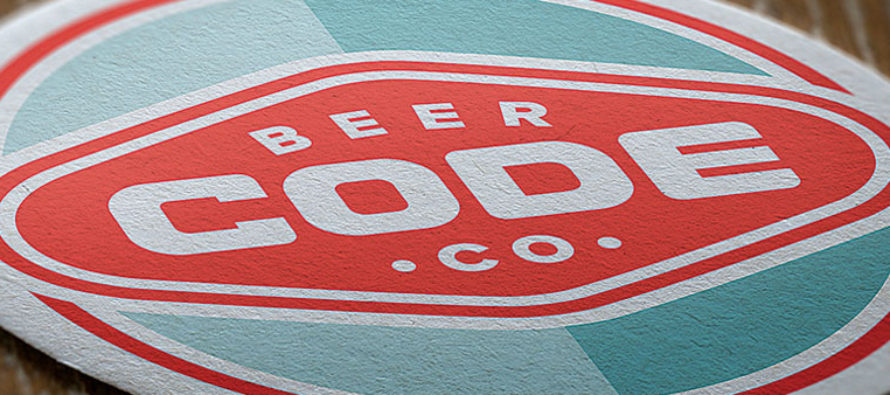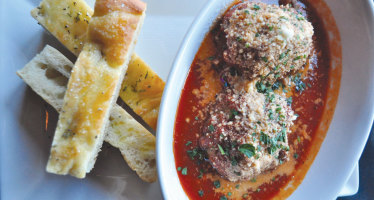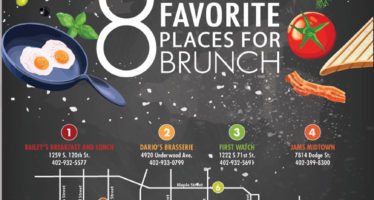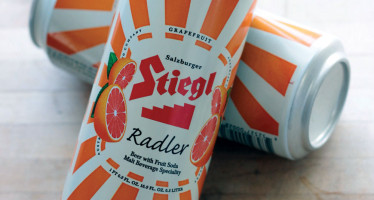It’s Just Natural: Nebraska’s Craft Beer Breweries are on the Rise

This is part one in a two part series.
With the explosion of craft beer and the dozens of new breweries in the great state of Nebraska, it’s starting to feel like our natural way of life. As the number of connoisseurs has multiplied many times over, so has the level of knowledge and appreciation from the mainstream population. At a recent beer fest, it was not abnormal to overhear a pair of sorority sisters in deep conversation about which was their favorite sour ale, nor was it to hear a friendly debate between a couple of farmers about hop profiles and who’s currently making the best IPA. While macro brewery sales continue to nosedive, craft beer has continued to rise and become the new norm. It’s official, for the first time since prohibition, America again has its own nationally celebrated beer culture. Here in Nebraska, there are now over 30 operational breweries in the state with at least 10 more currently in planning or build out. Is that too many? Not even close. It’s now part of who we are and part of how we enjoy time spent with each other. It’s our culture.
Please sit back with a fresh pour of your favorite brew and enjoy a few stories about the future of our new reality.
White Elm (Lincoln, NE)
While Lincoln may have just one third the population of the Omaha metro area, it is currently on a more rapid pace of adding new breweries. The next brewery ready to hit the capital city is White Elm Brewing Company, and co-owner and brewer Kolby Wood says they plan to open the doors to their production facility located on Van Dorn Street between 7th and 8th as soon as August or September of this year.
Kolby fell in love with homebrewing some 13 years ago while receiving his informal brewing education from Kirk Weidner, owner of Lincoln’s Kirk’s Brew homebrew supply store. Just a few years later, he and his friend, now business partner, Matt Heyne first entertained the idea of starting their own brewery. While they didn’t end up pulling the trigger then, Kolby made plans for a move to Denver where he hoped to find a position at a brewery that he could start on the ground floor and work his way up to a brewing position. Unfortunately that brewery job didn’t materialize and, strapped for cash, he tried finding bar tending work in Denver. Little did he know at the time that his golden key awaited him. Kolby explained, “I sent out something like 150 resumes and got one call back at a place called the Irish Snug. I ended up getting the opportunity to work as an hourly manager at the Snug for Jim and Frank McLoughlin, who, without their guidance and training, I’d have never been able to get the brewery open. I ended up opening two new locations and expanding our original two locations with the McLoughlins working my way into the regional manager/partner position. I worked for the McLoughlins for nearly a decade, all the while home brewing on every occasion that I was not at work.”
With seven years focused on setting himself up to reach his dreams, Kolby and his wife Sarah, a Denver native, packed up in 2014 and moved back to his home town of Lincoln. “Throughout my time in Denver, Matt Heyne and I had stayed in touch and our talks about the brewery started back up after I sent him and his wife Martha Lee a few growlers. Matt, Martha Lee and I later had a meeting to talk about the viability of opening a brewery in Lincoln. When we left the meeting, it was full speed ahead. I quit my job, the two of them took on another in the form of the brewery, and we’ve been pushing forward since”.
Kolby has also been fortunate to have made great connections in the brewing industry during his time in Denver, and has been able to lean on many of them for advice on opening up his own operation, including how to navigate things like the government management Solutions that are responsible for issuing their permits, which is never an easy process. When asked what some of the challenges have been throughout the process, he shared his optimistic outlook saying, “Seeing the forest from the trees is the hardest part. It’s easy to get caught up in the frustrations of the daily grind and large amount of legal efforts in getting a brewery open, but at the end of the day, we get to make beer. It might not be now, or next week but soon all of the construction will be over, the permit process will be less intensive and the crew will be hired; then we get to pursue our passion. We’ve yet to reach a hill not worth the view from the summit.”
The brewhouse at White Elm includes a two vessel 15 barrel gas fired system with a 30 barrel hot liquor tank from American Beer Equipment. ABE is conveniently headquartered right here in Lincoln. They were happy to buy local and Kolby explained that he had the brewhouse designed to be somewhat of an enormous homebrew system. “All the valves are manual and the dials don’t spin themselves. I liked the idea of making the system as hands on as possible knowing full well I’ll be working hard for every pint.” While some breweries are literally run by touchscreens, it makes sense that White Elm will take a more traditional approach with their plan to offer a lineup of rustic farmhouse styles where a saison, grisette and biere de garde will be a large part of their production. Beyond that we can look forward to modern hoppy American styles including IPA and American Pale Wheat and an extensive barrel aging program.
As for the name, the first thing Kolby and his wife did when they moved back to Lincoln was buy an old home in the Country Club area that was in need a lot of work. Their first four months were dedicated to long hours of renovating. What time they found for relaxing was spent under a giant white elm tree in the front yard that they immediately fell in love with. They came to learn from the city arborist that it was one of the oldest survivors in the Lincoln, as many have fallen to Dutch elm disease. Those trees were removed completely by trimming and Stump Grinding, which had prevented other trees from getting infected. As Kolby puts it, “It became almost ritualistic to sit on our front porch under the white elm and have a beer after a long day of work. When we had the, “this is really going to happen,” talk it was beer in hand under the white elm. The name came pretty easy from there.”
CodeBeer.Co (Lincoln, NE)
On deck in the Lincoln brewery pipeline is Code Beer Company, or as they like it be referred to as: CodeBeer.Co, which conveniently doubles as their website’s URL. With plans to open their doors sometime in late 2016, they will do so with great fame already attached to them. Not for anything they’ve brewed, but because CodeBeer.Co is the new home of the brewhouse used for 17 years in the now shuttered Wrigleyville Goose Island brewpub in Chicago.
Code came about all due to Adam Holmberg’s persistent hounding of his good friend and now business partner Matt Gohring to open a brewery. While Adam had dabbled in homebrewing himself, he was especially fond of what Matt was creating, and as Gohring puts it, “The conversation about opening a brewery came up a lot when we were around each other. It was something I often thought about, but figured it would happen a little further down the road if it was going to happen at all”. Matt had been brewing at home since 2008, and like many other home enthusiasts that later turn pro, found himself digging deeper and deeper into flavor development and process. Matt admits, “Pretty soon you find yourself counting yeast cells under a microscope at the end of your brew days thinking, how did I get myself to this point?” Still, the thought of opening a brewery rightfully felt daunting, but Adam continued to push. After many talks and a few planning session the two decided it was worth giving it a shot.
The day everything got real was when Matt spotted the famous Wrigleyville Goose Island brewery system come up for sale online. The Chicago brewpub had officially closed at the end of the Cubs 2015 season to make way for a new $140 million development in the area. The 15 barrel brewhouse is an older system by today’s standards, but as Matt explained, “it’s still in great condition and with a lot of life left in it”. The deal came with all of the equipment they would need and was simply too good to pass up. The only trick was that they were responsible for disassembling the entire system and then getting it out of the building. To that Matt added, “What we didn’t know was how tightly packed everything was in this old building in Wrigleyville and how much work it would take to get the equipment off the second floor of a building that was never meant to house a brewery. It was a rough four days of grinding it out, but we got some good photos, a lot of quality time with the equipment and an interesting story out of the deal.”
CodeBeer.Co is located on the corner of N Street and Antelope Valley Parkway, which finds itself just on the edge of Lincoln’s next revitalization project called the Telegraph District, where some 20 acres of industrial area will soon be transformed into retail store fronts, office buildings, town houses and lofts. The Telegraph District is also where the whole name came about. “We wanted our name to tie into the neighborhood we’d be calling home. So playing into the theme of the telegraph and Morse code, we came up with CodeBeer.Co.,” Matt said. The brewery will also enjoy having the newly opened N Street protected bike path running along the North side of the building, where thirsty cyclist are sure to make their taproom a regular stop during weekend rides and daily commutes home from work.
With dreams of a canning line in the future, they plan to start things off focusing on draft only for the first year, mostly through taproom sales and a few local tap handle accounts. As for what can we expect to be brewed? No guarantees have been made quite yet, but Matt did hint, “I rarely brew the same recipe twice. For the last few months, I’ve been working at dialing in a handful of styles. Those tend to be saisons, IPAs, red ales, cream ales, and stouts. The goal is to have a handful of mainstays as well as plenty of rotators and one-offs.” Also adding, “We love variety and plan to have as many different styles on tap as we’re able. There are still so many things to learn with beer and I want to be abe to share what I learn with the community as often as possible.”
Read the next installment in issue 25.

Jason McLaughlin
Jason is a Certified Cicerone, ranked National as a BJCP judge (Beer Judge Certification Program), is a craft beer aficionado, a writer for the Nebraska Beer Blog, and award winning homebrewer living in Lincoln. Jason spends time traveling around the country judging beer competitions, and attending related events. Beer tasting and evaluation is his passion, and he can appreciate a great example of any style regardless of hype.
Related Articles
The Top Dishes & Drinks of 2011
Welcome to the 2011 Menu of Menus. The menu items featured here were the top vote-getters in an online poll
8 of Our Favorite Places for Brunch
Brunch has been a trending craze in the national food scene for a while now, with bottomless brunch in NYC
It’s Beer-ginning to Look Like Spring
During one particularly chilly evening this past winter, I remember staring at my road bike from the couch, leaning sadly
No comments
Write a commentOnly registered users can comment.














